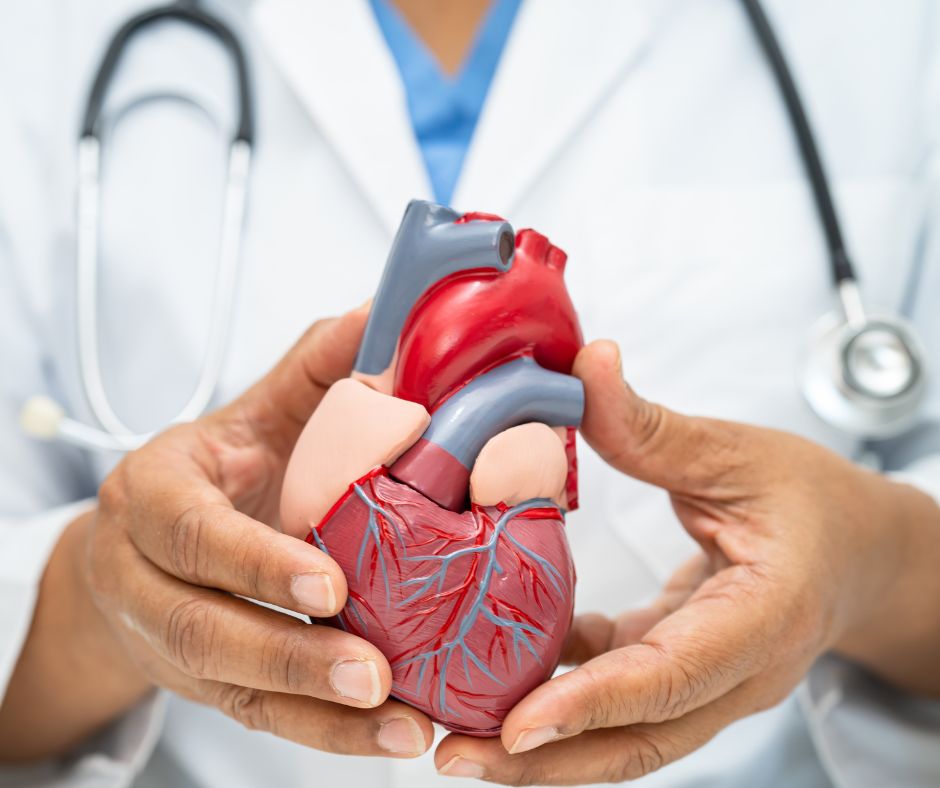Living with chronic pain can be a daily struggle, affecting millions of people worldwide. According to the CDC, an estimated 20.9% of U.S. adults experienced chronic pain in 2021. Fortunately, technology has stepped in to offer innovative solutions, like chronic pain management apps.
These digital assistants are powerful, accessible tools to help pain sufferers track symptoms, manage medications, and find relief. In this article, we’ll discuss chronic pain management apps in detail, outlining the ways they can help improve quality of life for those who experience chronic pain.
Contents
Overview of chronic pain management
First, let’s take a look at the various digital tools available to help manage chronic pain.

Types of digital tools for chronic pain
Many digital tools on the market can help assess and treat chronic pain, and improve how patients access and engage with their care (Rejula et al., 2021):
- Virtual Reality (VR): VR shows promise in helping people with chronic pain. In 2021, the FDA approved a VR system called EaseVRx to help reduce chronic pain.
- Artificial Intelligence (AI): AI is being used more in healthcare, including for diagnosing and managing treatments. For chronic pain, AI can use data like breathing rate, oxygen levels, and heart rate to estimate pain levels and changes.
- Remote Patient Monitoring (RPM): Tools like smartphone apps, sensors, and wearable devices can help doctors collect and track patient symptoms between appointments.
- Digital therapy: These are devices and methods that give patients frequent advice to improve their behaviors and habits. Most of these use an approach called cognitive behavioral therapy (CBT).
- Virtual patient engagement: Digital communication tools can help patients be more involved in their care, no matter where they are.
Definition of chronic pain management apps

Chronic pain management apps are mobile applications that help people with chronic conditions like diabetes, cancer, and fibromyalgia track and control their pain. They serve as a digital companion, offering features like pain diaries, medication reminders, and educational resources. The main goal is to empower users to take control of their pain management, providing insights that can lead to better health outcomes.
How they’re different from general health apps
While general health apps focus on overall wellness, chronic pain management apps are tailored to address specific pain-related issues. They offer specialized tools like pain mapping and flare-up prediction, which are not typically found in standard health apps.
Key features and functions

Chronic pain management apps come packed with features to make pain management easier:
- Pain tracking: Users can log pain episodes, noting intensity, location, and triggers. This helps in identifying patterns and potential triggers.
- Medication management: Apps often include reminders to take medication, ensuring adherence to prescribed treatments.
- Educational resources: Many apps offer information on pain management techniques, such as deep breathing exercises and guided meditation.
- Integration with wearables: Some apps sync with wearable devices to provide real-time data on physical activity and sleep patterns.
Benefits of using digital tools for pain management
Why should you consider using these apps? Here are some benefits:
- Improved self-management: By tracking pain and related factors, users gain insights into their condition, leading to better management.
- Better communication: Sharing app data with doctors can lead to more informed treatment decisions.
- Convenience: Having a digital tool at your fingertips means you can manage your pain anytime, anywhere.
Top Features of Effective Pain Management Apps
When choosing a pain management app, certain features can make a big difference in how well it works. Let’s explore what to look for.

Pain tracking
Effective apps allow users to log pain episodes in detail. This includes noting the intensity, duration, and location of pain, as well as potential triggers. A study found that detailed pain tracking can help users identify patterns and adjust their management strategies accordingly (Zhao et al., 2019).
Medication reminders and management
Medication adherence is crucial in pain management. Apps with reminder features ensure users take their medication on time, reducing the risk of missed doses and improving overall treatment effectiveness.
Customizable pain scales and body maps
Customizable features allow users to personalize their pain assessment. This means they can adjust pain scales to better reflect their experiences and use body maps to pinpoint pain locations accurately.
Integration with wearable devices
Integration with wearables provides real-time data on various health metrics, such as heart rate and activity levels. This data can offer insights into how lifestyle factors affect pain, allowing for more informed management decisions.
Popular Chronic Pain Management Apps Review
Let’s take a closer look at some of the most popular chronic pain management apps available today. These apps offer various features to help users track, manage, and understand their pain better.
Note: Prices listed in this section are accurate as of August 2024. Visit the app’s website to confirm their current pricing.
1. Pathways Pain Relief

Pathways Pain Relief is a web-based app created by chronic pain sufferers and pain specialists at Pathway. It aims to help users manage their pain through mind-body therapies and comprehensive pain education.
Key Features:
- Mind-body pain therapy program
- Meditation and mindfulness exercises
- Physical therapy area
- Pain and wellbeing tracking
| Pros | Cons |
| Comprehensive approach to pain management | Web-based only (no mobile app) |
| Created by pain sufferers and specialists | Requires internet connection |
| High user rating (4.6/5) |
Cost: $79 (flat fee).
Use case
A chronic pain patient looking for a holistic approach to pain management, combining physical therapy, mindfulness, and pain education.
To learn more, visit:
2. Curable

Curable is available on iOS, Android, and web platforms. It was founded by three individuals who recovered from chronic pain and now aim to help others access similar treatments.
Key Features:
- Mind-body pain therapy program
- Meditation and mindfulness area
- Chatbot for personalized guidance
| Pros | Cons |
| Available on multiple platforms | Lower user rating compared to some competitors (4.2/5) |
| Personalized guidance through chat bot | |
| Founded by chronic pain recovery stories |
Cost: $11.99 per month.
Use case
Someone interested in exploring mind-body connections in pain management, with a preference for guided, personalized experiences.
To learn more, visit:
3. Manage My Pain

Manage My Pain, an app created by Managing Life, is available on iOS, Android, and web platforms. It focuses on detailed pain tracking and analysis to help users understand their pain patterns.
Key Features:
- Comprehensive tracking of pain and well-being
- Export statistics for healthcare providers
- Easy-to-read charts and graphs
| Pros | Cons |
| Detailed pain tracking capabilities | May be overwhelming for users seeking simpler solutions |
| Shareable reports for healthcare providers | |
| High user rating (4.4/5) |
Cost: $4.99 per month for reports and educational content.
Use case
A patient who wants to keep detailed records of their pain experiences to share with their healthcare team and identify patterns over time.
To learn more, visit:
4. Migraine Buddy

Migraine Buddy, developed by Aptar Digital Health, is specifically designed for migraine sufferers. Available on iOS and Android, it helps users track and manage their headache and migraine symptoms.
Feedback on Migraine Buddy says the app is great for people with migraines (Gamwell et al, 2021). It lets users share info with doctors, track what causes their migraines, and what helps relieve them. It can also calculate how much migraines affect a person’s daily life.
Key Features:
- Migraine tracking and analysis
- Community support features
- Educational resources on migraines
| Pros | Cons |
| Specialized for migraine sufferers | Not suitable for other types of chronic pain |
| Strong community support | |
| Very high user rating (4.6/5) |
Cost: $0 for MigraineBuddy; $12.99 per month or $89.99 per year for MBplus.
Use case
A migraine sufferer looking to track their symptoms, identify triggers, and connect with others who have similar experiences.
To learn more, visit:
5. CareClinic

CareClinic is available on iOS and Android. It offers a comprehensive approach to symptom tracking and treatment planning.
Key Features:
- Symptom and treatment goal tracking
- Daily habit monitoring
- Medication and appointment reminders
| Pros | Cons |
| Comprehensive tracking of symptoms and treatments | May require significant time investment for data entry |
| Goal-setting features | |
| High user rating (4.6/5) |
Cost: Free; they also have monthly and annual plans for premium features.
Use case
A patient managing multiple chronic conditions who needs to track various symptoms, medications, and treatments in one place.
To learn more, visit:
6. PainScale

Boston Scientific Corporation created PainScale, a highly-rated pain management app with a range of features for tracking and managing chronic pain, and educational articles. It’s available on iOS, Android, and the web.
Gamwell et al (2021) noted that PainScale includes the very helpful techniques for managing pain, and is easy to use for various types of chronic pain. It has a daily diary where users can track their symptoms, triggers, and medications, and can be share this info with doctors.
Key Features:
- Pain tracking and analysis
- Personalized pain management plans
- Educational resources
| Pros | Cons |
| Comprehensive pain management features | Limited information available about cons |
| Personalized approach | |
| High quality score in research studies |
Cost: Free
Use case
A chronic pain patient looking for a well-rounded app that combines tracking, personalized plans, and education.
To learn more, visit:
How to Choose the Right Pain Management App
Selecting the right app can be overwhelming. With so many options available, how do you pick the right app for your needs? Here’s how to make an informed choice.

Assess your specific needs and pain conditions
Start by evaluating your specific pain conditions. Are you dealing with neuropathic pain, or is it more related to a chronic condition? Choose an app that offers features tailored to your needs.
Consider ease of use
An app should be easy to navigate. Look for a user-friendly interface that allows you to access features quickly and efficiently.
Review data privacy and security features
Data privacy is crucial. Ensure the app complies with relevant data protection regulations and offers secure data storage.
Check compatibility with other devices
Make sure the app is compatible with your smartphone, tablet, or wearable devices. Compatibility ensures seamless integration and use.
When comparing these apps, consider what features are most important to you. Do you prefer detailed tracking, or is community support more valuable? Each app offers unique benefits, so choose one that aligns with your needs. Remember to consult with your healthcare provider about incorporating these tools into your overall pain management plan.
Integrating Apps into Your Pain Management Plan
Once you’ve chosen an app, the next step is to make it a regular part of your pain management routine.

Work with healthcare providers to use app data effectively
Share app data with your healthcare provider. This collaboration can lead to more informed treatment decisions and better pain management outcomes.
Combine app use with other pain management strategies
Apps should complement, not replace, other pain management strategies. Combine app use with physical therapy, medication, and lifestyle changes for optimal results.
Set realistic expectations for app benefits
Understand that while apps are helpful tools, they are not a cure-all. Set realistic expectations for what an app can achieve in managing your pain.
Tips for consistent app usage and data logging
Consistency is key. Regularly update the app with accurate information to track your progress and adjust your management strategies as needed.
Conclusion
Chronic pain management apps offer a ray of hope for those grappling with persistent pain. These digital tools empower users to take an active role in their pain management, providing valuable insights and support. However, these apps shouldn’t replace professional medical advice.
By choosing the right app and integrating it into your overall pain management strategy, you can gain a better understanding of your condition and find more effective ways to cope. Embrace these technological advancements and take the first step towards a more manageable pain experience.
References
FDA Authorizes Marketing of Virtual Reality System for Chronic Pain Reduction. (2021). U.S. Food and Drug Adminstration. Retrieved from https://www.fda.gov/news-events/press-announcements/fda-authorizes-marketing-virtual-reality-system-chronic-pain-reduction
Gamwell, K. L., Kollin, S. R., Gibler, R. C., Bedree, H., Bieniak, K. H., Jagpal, A., Tran, S. T., Hommel, K. A., & Ramsey, R. R. (2021). Systematic evaluation of commercially available pain management apps examining behavior change techniques. Pain; 162(3), 856. doi.org/10.1097/j.pain.0000000000002090
Orlovich Pain MD. (n.d.). The Power of Pain Management Apps: A New Frontier in Chronic Pain Relief. Retrieved from https://orlovichpainmd.com/the-power-of-pain-management-apps-a-new-frontier-in-chronic-pain-relief/
Rejula, V., Anitha, J., Belfin, R. V., & Peter, J. D. (2021). Chronic Pain Treatment and Digital Health Era-An Opinion. Frontiers in Public Health; 9, 779328. doi.org/10.3389/fpubh.2021.779328
Rikard, S. M., Stahan, A. E., Schmit, K. M., & Guy Jr., G. P. (2023). Chronic Pain Amonf Adults – United States, 2019-2021. MMWR Morb Mortal Wkly Rep 2023;72:379–385. dx.doi.org/10.15585/mmwr.mm7215a1. Retrieved from https://www.cdc.gov/mmwr/volumes/72/wr/mm7215a1.htm
Zhao, P., Yoo, I., Lancey, R., & Varghese, E. (2019). Mobile applications for pain management: An app analysis for clinical usage. BMC Medical Informatics and Decision Making; 19. doi.org/10.1186/s12911-019-0827-7
































































